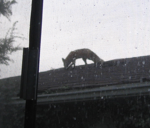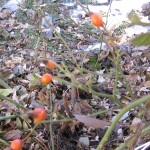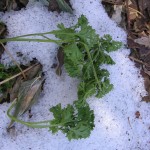 As people encroach on the wilderness, the amount of wild life that shows up in the cities is increasing. It used to be that there was an occasional sighting of deer or bear or other interesting creatures out of their element in an urban setting. Police would be called, animal catchers would round up the culprits, and soon it was people in the city and animals in the wild once more.
As people encroach on the wilderness, the amount of wild life that shows up in the cities is increasing. It used to be that there was an occasional sighting of deer or bear or other interesting creatures out of their element in an urban setting. Police would be called, animal catchers would round up the culprits, and soon it was people in the city and animals in the wild once more.
Now those boundaries have become permanently warped. There are packs of coyotes living in the wild grasses around O’Hare Field in Chicago. Skunks and raccoons and opossums are common urban dwellers. Here in Denver, the red fox has become an urban dweller as well.
No where else I’ve lived has had such a steady, large population of Urban Foxes! They are welcome in my yard since I am over run with squirrels without their help. I like foxes. They have a casual elegance and beautiful fur. You can see them trotting down the sidewalks in their neighborhood, making the rounds. If you are in the habit of looking closely, you can tell them apart as well. The most interesting feature to me is the ability of these wild creatures to adapt to their surroundings. Agile as big cats, foxes walk on the tops of high fences, jump up on the roofs, and cross a whole block without hitting the ground. I have seen one sitting in the crotch of a tree in the backyard, 10 feet off the ground, surveying the scene!
Fox teaches camouflage and adaptation. Fox makes the best of new situations and goes with the flow. We could learn a lot from our Urban Foxes.


 If I actually left my yard, what wonders could I find? For one thing, there are many roots besides the dandelions in my yard. There are burdock and yellow dock for sure, and their dead leaves would lead me to them. Also cattails have many possibilities for food year around, as do birch trees, willows, balsam fir, pine needles, blackberry bushes, and clover.
If I actually left my yard, what wonders could I find? For one thing, there are many roots besides the dandelions in my yard. There are burdock and yellow dock for sure, and their dead leaves would lead me to them. Also cattails have many possibilities for food year around, as do birch trees, willows, balsam fir, pine needles, blackberry bushes, and clover.
